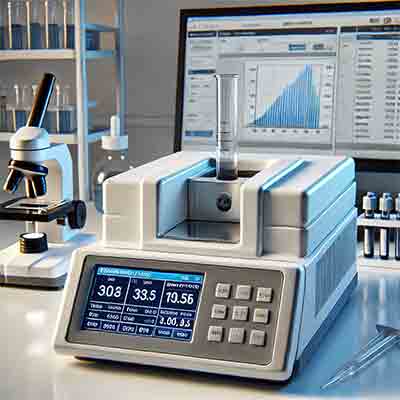Reference Wafer for Spectrophotometer
A research scientist requested the follwoing quote.
We are looking for a supplier of a custom 4" silicon wafer with 4 steps/positions of different thicknesses, see below:
- 500nm
- 1000nm
- 500nm
- 2000nm
The wafers will be used as a calibration/reference wafer for a spectrophotometer. Is this something you could help with or provide a quote for?
Reference # 302227 for specs and pricing.
Get Your Quote FAST! Or, Buy Online and Start Researching Today!
Quartz Wafers Infrared Spectrophotometer Analysis
A university professor requested a quote for the following.
I spoke with you earlier this afternoon, I'd like to purchase 3" diameter quartz wafers (350 um thickness), and would like to inquire what the concentration of any impurities (such as Al, Cu) are, in ppm. You offered to forward my inquiry to your production plant, I'd be very grateful for any feedback from them by Wednesday morning. I'd like to ideally make a purchasing decision by Wednesday afternoon and hopefully place an order with University Wafer.
Records of Infrared Spectrophotometer Analysis used to determine alpha value Yes. They can comply.
Reference #997-3376 for specs and pricing.
Double Side Polished Intrinsic Silicon Wafers for FTIR Spectrophotometer
A post doc requested a quote for the following.
Need quote for DSP silicon wafer dia 4 inch, thickness 0.4 to 0.6mm
Both side polished Silicon wafer (Intrinsic), for FTIR spectrophotometer, Thickness 0.4 to 0.6mm, dia 4 to 6" (Qty. 50nos.)
Reference # 201657 for specs and pricing.
What is a Spectrophotometer?
A spectrophotometer is an analytical instrument used to measure the amount of light absorbed or transmitted by a substance at specific wavelengths of light. It operates by passing a light beam through a sample and measuring how much light is absorbed or transmitted. The data collected helps determine the concentration of a particular substance or the properties of materials, such as their color, transparency, or reflectivity.
Spectrophotometers typically consist of a light source, a monochromator (to select specific wavelengths), a  sample holder, a detector, and a display/output system. They are commonly used in chemistry, biology, physics, and materials science for tasks such as:
sample holder, a detector, and a display/output system. They are commonly used in chemistry, biology, physics, and materials science for tasks such as:
- Quantifying chemical concentrations in a solution.
- Monitoring reaction rates by tracking changes in absorption over time.
- Determining the optical properties of materials like films, coatings, or glass.
- Analyzing DNA, RNA, and protein concentrations in biological samples.
Spectrophotometers can operate in different wavelength ranges, including ultraviolet (UV), visible light, and infrared (IR), depending on the type of analysis required.
Spectrometer vs Spectrophotometer, What is the Difference Between The Two?
The difference between a spectrometer and a spectrophotometer lies in their specific functions and the type of measurements they perform:
1. Spectrometer:
- A spectrometer is an instrument designed to measure the wavelengths of light and the intensity of light across a spectrum. It separates light into its component wavelengths (or colors) and can measure how much light is present at each wavelength.
- Spectrometers are typically used for qualitative analysis, such as determining what wavelengths or frequencies are present in a light source or analyzing the composition of light emitted or absorbed by a substance.
- They are often used in physics, astronomy, and materials science to study the spectral characteristics of light sources or samples.
Key features of a Spectrometer:
- Measures the wavelengths of light.
- Used for analyzing the spectral composition (the "fingerprint") of light.
- Often used in emission or absorption spectroscopy to identify elements or compounds based on their spectral lines.
2. Spectrophotometer:
- A spectrophotometer is a type of spectrometer that not only measures wavelengths but also measures the amount of light absorbed or transmitted by a sample at specific wavelengths.
- It is primarily used for quantitative analysis, such as determining the concentration of a substance in a solution by measuring how much light is absorbed at particular wavelengths.
- Spectrophotometers are commonly used in chemistry, biology, and materials science to measure absorbance, transmittance, or reflectance of samples over a specific range of wavelengths.
Key features of a Spectrophotometer:
- Measures both the intensity of light at specific wavelengths and the absorbance or transmittance of a sample.
- Used for quantitative measurements, such as determining the concentration of a solution.
- Often used for color analysis, DNA/RNA quantification, and material property analysis.
Summary:
- Spectrometer: Focuses on measuring wavelengths and the distribution of light over a spectrum. More qualitative in nature.
- Spectrophotometer: Measures both wavelengths and the absorption or transmission of light by a sample, often used for quantitative analysis.
In essence, a spectrophotometer can be considered a more specialized form of a spectrometer with the additional ability to measure absorbance or transmittance, making it suitable for concentration measurements.

 sample holder, a detector, and a display/output system. They are commonly used in chemistry, biology, physics, and materials science for tasks such as:
sample holder, a detector, and a display/output system. They are commonly used in chemistry, biology, physics, and materials science for tasks such as: